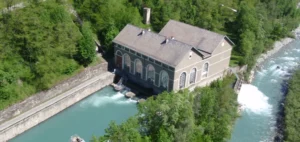The way is clear for the conversion and expansion of the Rudolf Fettweis hydroelectric power plant in the Northern Black Forest. EnBW Energie Baden-Württemberg AG will invest approximately 280 million euros in the modernization of the existing power plant and its conversion into a high-capacity pumped storage power plant.
End of construction in 2027
Construction is expected to begin in the fall of 2023 and be completed by the end of 2027. The new Forbach pumped storage power plant completes the expansion of the renewable energy production capacity.
After a lengthy approval process, the complex project received approval from the Karlsruhe regional authorities on March 1, 2023. The new power plant will include a pump turbine for the Schwarzenbach power plant and three Francis turbines for the Murg power plant. An underground water tank will also be added for water storage.
Pumped storage plants are essential for the energy transition because they compensate for fluctuations in renewable energy sources and contribute to the stability of the power grid. The Rudolf Fettweis hydroelectric power plant in Forbach currently has a total capacity of about 71 megawatts and consists of four individual power plants built between 1914 and 1926.






















